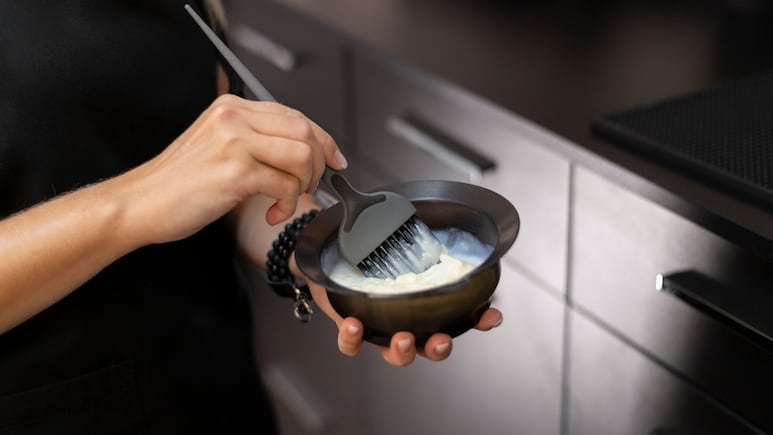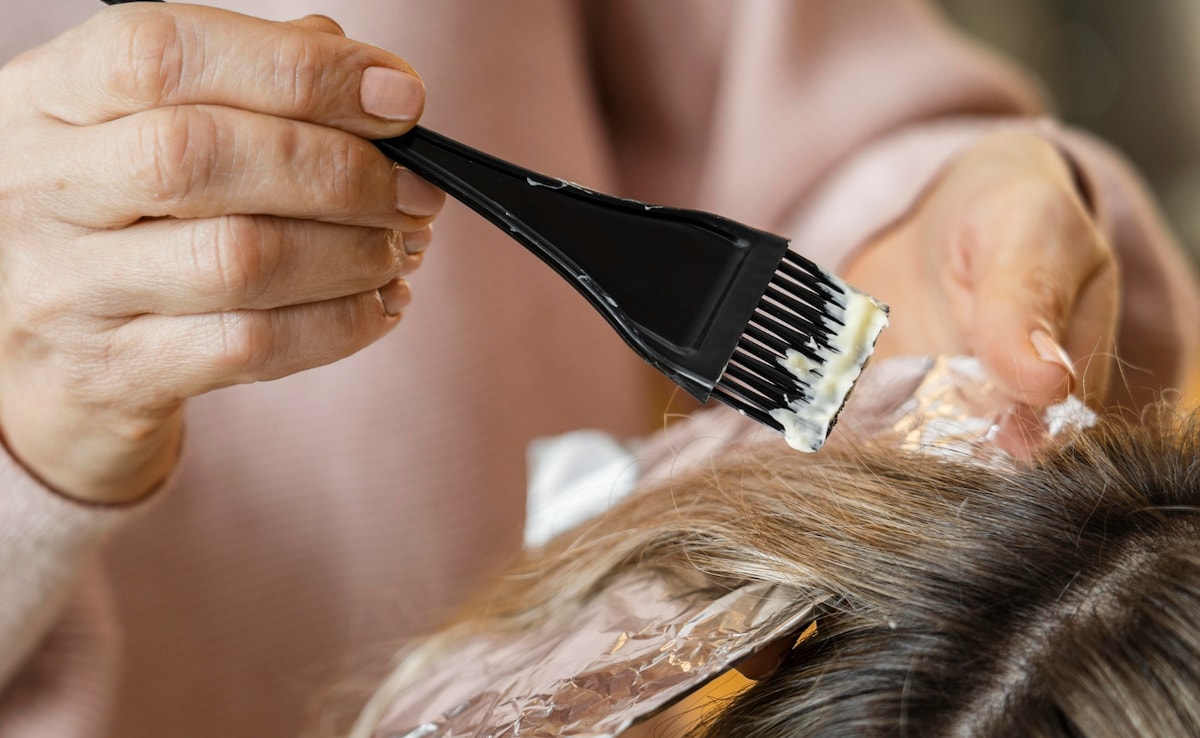
A fresh hair makeover is an instant mood booster. For many, using hair dye at home for brilliant results has also become easier over the last few decades. But, did you know that a hair makeover using hair dye has a shocking health trade-off? This is thanks to the little-known fact that there are chemicals in most hair dyes that can indirectly impact your kidney health. Kidneys are the body's defense mechanism against chemical exposure. But there is one chemical specifically that is considered to be the primary link between hair dye and kidney health, and that's para-phenylenediamine (PPD).
What makes this and other chemicals in hair dye so negative for kidney health is the fact that hair colour is absorbed through the scalp. The scientific link between frequent hair dye use and kidney health has been explored by many studies and it is concerning, as the average frequency of hair dye use in India is between two and three times a year for an individual, according to a study published in The International Journal of Trichology (2013). Along with this statistic, coupled with the vast population of India, this is a major health issue that needs attention and scrutiny.
What Are The Health Risks Of PPD In Hair Dye?
PPD or para-phenylenediamine is the key culprit behind causing damage to the kidneys. As this chemical in hair dyes is responsible for deep,long-lasting colour, for darker shades.
This chemical is absorbed through the scalp of the hair dye user during a coloring session. There is scientific evidence of this chemical causing allergic reactions, and it's made more dangerous as it can be absorbed through the bloodstream.
The skin of the scalp is thicker than the rest of the body, but it also has the most blood vessels, which makes the use of hair dye with PPD dangerous. In addition, the scalp has high permeability (absorption capability) for what is applied on the scalp.
There is a need to follow a kidney-safe coloring protocol that can protect your kidneys while giving yourself a fresh hair makeover.
The kidney's main job is to filter toxins when chemicals like PPD enter the bloodstream. There is an overtime shift when the foreign chemical is applied on the sensitive scalp. In turn, this results in irritation of the scalp and stress. Kidney detoxification is made difficult, and the following allergic reactions may occur:
- Redness
- Swelling
- Itchiness
- Burning sensation
What Are The Symptoms Of Hair Dye Allergies?
The key aspect of understanding hair dye and how it causes kidney strain is when there is frequent/ prolonged exposure. The main chronic symptoms of damage from hair dye are as follows, as per a study in An International Journal Published by the British Industrial Biological Research Association (2004) :
- Chronic Inflammation
- Severe risk of Kidney Failure
In addition, the main vulnerable groups that need to exercise caution to escape hair dye kidney damage are:
- People with existing health conditions (diabetics, hypertension patients, most importantly, people with chronic kidney disease need to avoid hair dyeing.
- Usage patterns ( people who dye their hair every month once or twice) or those who use dark, chemical-heavy shades).
What Are The Steps To the Kidney-Safe Coloring Protocol?
There are actionable, practical ways that can offer a solution to minimize the risk of kidney damage due to hair dye usage. Here they are:
- Mandatory Patch Test: Test the hair color on a part of your skin to see how it reacts. This will help determine if the hair dye will suit your scalp or not. This is the first line of defense against severe allergic or absorptive reactions.
- Barrier Protection: Always wear gloves and apply a barrier cream (like petroleum jelly) around the hairline.
- Ventilation is key: Avoid inhaling fumes, which puts extra strain on the body.
- Time management: Don't keep the hair dye on your scalp more than the hair dye package recommendation.
- Rinse and Recover: Rinse through the scalp thoroughly and space out sessions of hair colouring; this will help your scalp breathe.

Photo Credit: Freepik
What Are The Kidney-Safe Hair Dyes?
The harmful aspect of hair dyes lies in their chemical composition, which makes for the use of the following ways to protect your long-term hair health and kidney health:
Natural and Traditional Alternatives: The use of 100% natural, plant-based hair dyes like henna and indigo coats the hair strands instead of penetrating the scalp.
Read the Label: Turn the hair dye and check out the ingredients of the hair dye packet, look for these two key aspects:
- Ammonia-free
- PPD-free
Semi-permanent Tints of Hair Dye: The semi-permanent hair dye alternatives generally have fewer harmful chemicals than permanent hair dyes, offering a lower-risk intermediate choice.
It is crucial to make cautious beauty choices, as kidneys are irreplaceable and protecting them is non-negotiable.
Note: If you have experienced unexplained symptoms (fatigue, swelling after frequent coloring sessions on your scalp, consult a Dermatologist along with a Nephrologist (a medical doctor who specializes in diagnosing and treating kidney conditions) immediately to seek medical help.
Remember, health and beauty can co-exist, but protecting your health is paramount and irreplaceable.
Disclaimer: This content, including advice, provides generic information only. It is in no way a substitute for a qualified medical opinion. Always consult a specialist or your own doctor for more information. NDTV does not claim responsibility for this information.
References:
Patel, Dharmistha; Narayana, Sarala; Krishnaswamy, Bhuvana. Trends in Use of Hair Dye: A Cross-Sectional Study. International Journal of Trichology 5(3):p 140-143, Jul-Sep 2013. | DOI: 10.4103/0974-7753.125610
Hui-jua, Z. (2013). Survey on usage of dye substances in hair dyes. Journal of Environmental Health.
Nohynek, G., Fautz, R., Benech-Kieffer, F., & Toutain, H. (2004). Toxicity and human health risk of hair dyes. Food and Chemical Toxicology: An International Journal Published for the British Industrial Biological Research Association.
Track Latest News Live on NDTV.com and get news updates from India and around the world

